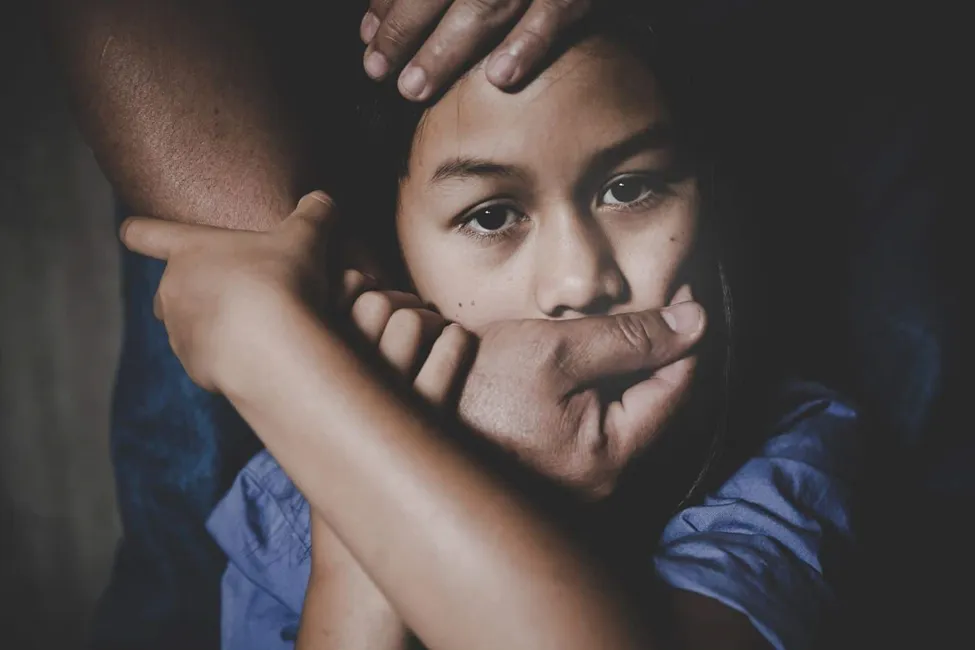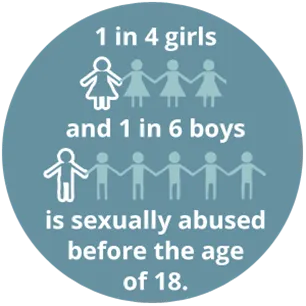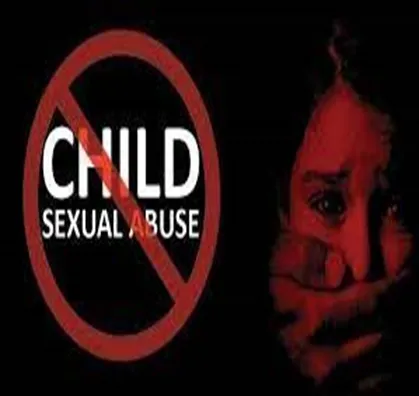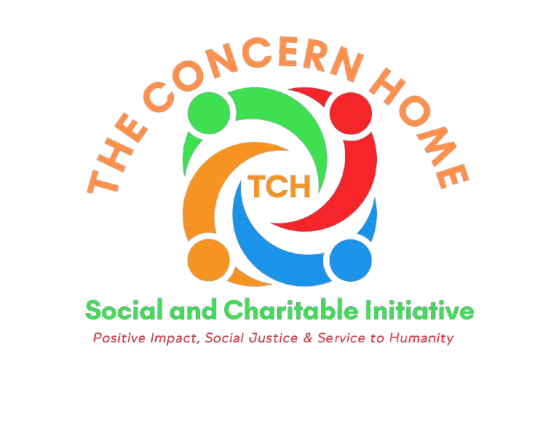UNDERSTANDING CHILD SEXUAL ABUSE AND ITS IMPLICATIONS
Introduction
The need for this subject matter at this time is apt, basically because child sexual abuse has undoubtedly taken a disturbing dimension in recent times. painfully, society seems oblivious to the damage being done, not just to victims but to society as a whole.
Child sexual abuse is any act that involves the use, employing, persuasion, inducement, enticement, or coercion of any child to engage in or assist any other person to engage in any sexually explicit conduct or simulation (imitating the behaviour of some situation or some process) of such conduct to produce a visual depiction of such conduct. It is also known as Child Molestation — a form of sexual abuse that involves an adult engaging a child in sexual activities or engaging in sexual activities with a child. The activities may involve physical contact, including penetrative or non-penetrative acts.
It encompasses many types of sexually abusive acts towards children, including sexual assault (rape), incest, and commercial sexual exploitation of children. The child oft could be approached by an adult to ask for it by pressurising, luring, or drugging.

According to the World Health Organisation, WHO (1999) consultation on Child Abuse Prevention, “Child Sexual Abuse is the involvement of a child in sexual activity that he/she does not fully consent to, or for which the Child is not developmentally prepared and cannot give consent, or that violates the law or social taboos of society. Child Sexual Abuse is evidenced by this activity between a child and an adult or another child (usually a victim of child sexual abuse) who, by age or development, is in a relationship of responsibility, trust, or power, the activity being intended to gratify or satisfy the sexual need of the person.
Other perspectives on child sexual abuse as stated by the International Save the Children Alliance, (2008) defines Child Sexual Abuse as “the immediate abusive act against a child and form the basis of exploitation of the child; it includes indecent touching, penetration, and sexual torture, as well as indecent exposure, using sexually explicit language towards a child and showing children pornographic material. People who sexually abuse children may have an emotional or professional relationship with the child, where they exploit their position of trust and power, and the child’s lack of knowledge, third parties having a commercial or other exploitative interest in the child”.
Furthermore, the United States Centre for Disease Control and Prevention (CDC) opined that Child Sexual Abuse is “any completed or attempted (non-completed) sexual act, sexual contact with or exploitation (i.e. a non-contact sexual interaction) of a child by a caregiver”.

Child sexual abuse can take various forms, some of which include but are not limited to:
- Non-contact behaviour such as voyeurism, exposure of private parts, and sexual talk;
- Fondling of the private parts/ genitals;
- Exposure to pornographic contents, objects, and penile penetration of the genitalia or anus, etc.
- Inducement or coercion of a child to engage in any unlawful sexual activity;
- Exploitative use of a child in prostitution or other unlawful sexual practices;
- The exploitative use of children in pornographic performance and materials.”
Facts and Dynamics of Child Sexual Abuse
By dynamics, I mean ways in which child sexual abuse occurs:
- Perpetrators rarely use physical force/violence. They rather manipulate the child’s trust and hide the abuse (for example, you hear things like “I will kill you and your parents and siblings if you tell anyone).
- More often than not, the perpetrator is typically a known and trusted caregiver.
- Child Sexual Abuse often occurs over a long period.
- Child Sexual Abuse usually occurs as repeated episodes that become more invasive (gradually intrusive without right or permission) with time.
- Perpetrators usually engage the child in the gradual process of sexualising the relationship over time (grooming).
- Incest/intra-familial abuse accounts for about one-third of all child sexual abuse cases.
- Child sexual abuse can occur in different settings. It could be in the home, school, or in the community where child labour is common, e.g. hawking.
- More concerning is that children now constitute the majority of abusers — this means that children who have been victims of child sexual abuse are the ones abusing other children.
Other ways child sexual abuse is carried out include:
- Penetration of the vagina or anus by finger.
- Use of objects like candles.
- Oral sex.
- Touching of the breasts.
- Masturbation — as a result of exposure to sexual activities.
What the Data Says

- It is widespread.
- At least 120 million girls under the age of 20, i.e. about 1 in 10, have been forced to engage in sex or perform the acts. Although the actual figure is likely to be higher (UNICEF).
- The global prevalence rate of child sexual abuse has been estimated at 19.7% for females and 7.9% for males.
- Most sexual abuse offenders are acquainted with their victims; approximately 30% are relatives of the child, most often fathers, brothers, uncles, and cousins.
- Approximately 60% are acquaintances such as friends of the family, babysitters, or neighbours.
- Strangers are the offenders in approximately 10% of child sexual abuse cases.
- Most child sexual abuse is perpetrated by men.
- Studies on female molesters show 14% — 40% of abuse against boys and 6% of abuse against girls.
Root Causes of Child Sexual Abuse
- Lack of sex education in the home.
- Poor communication — Lack of or breakdown in communication between parents and their children.
- Domestic violence
- Broken home.
- Child labour
- Poverty
- Illiteracy
Other Contributing Risk Factors for Child Sexual Abuse
This means factors that predispose a child to or make a child vulnerable to sexual abuse. They are as follows:
- Being a female, just because the child is a girl or female. Although very rarely do male children constitute a large portion of child victims.
- Unaccompanied children — sending children on errands alone.
- Children in foster care/adopted children, and step-children
- History of abuse
- War/armed conflict
- Psychological and cognitive vulnerability
- Single parenting
- Social isolation
- Parents with mental illness or alcohol/drug dependency
- Unmonitored access to mobile devices and the internet
Perpetrator’s Threats to their Victims
- I will kill you
- You will die
- Your mummy will hate you
- Your mummy will beat you
- Your mummy will blame you
- Your mummy and your daddy will die
- He could cut the child, lick the blood, and say, “This is a blood covenant between us, the day you tell is the day you die.”
Physical and Behavioural Indicators of Child Sexual Abuse
There are certain indicators, both physical and behavioural, that tend to point to child sexual abuse. The presence of one or two of these indicators does not necessarily mean abuse. However, professionals like social workers and health care providers rely on these indicators to help in detecting cases of child sexual abuse, especially in children who are non-verbal, i.e. children who cannot speak.
Hence, these indicators must be used with caution, especially in a cases where disclosure is absent or physical findings. Some physical indicators include:
- Unexplained genital injury
- Regression in behaviour, school performance, or attaining developmental milestones
- Inflammation of the vagina/valve
- Vagina/penile discharge
- Anal complaints (fissure, pain, bleeding)
- Pain when urinating
- STI (Sexually Transmitted Infection)
- Presence of sperm
- Pregnancy
Behavioural Indicators
- Acute traumatic responses, such as cringy behaviour and irritability, in young children
- Sleep disturbance
- Problems at school
- Depression
- Self-esteem issues
- Inappropriate sexualised behaviours
- Eating disorders
Sexualized Behaviour that Calls for Concern
- Kissing with one’s tongue thrust into the other person’s mouth
- Fondling one’s own or another person’s breast or genitals
- Masturbation
- Rhythmic pelvic thrust
- Looking out for age-inappropriate sexual behaviours
The Implications of Child Sexual Abuse on the Victim
The implication is divided into three (3) — physical, psychological, and social:
A. Physical/Health
- Physical injury
- Unwanted pregnancy
- Unsafe abortion
- Vesicovaginal fistula (VVF)
- Gastrointestinal disorders — for example, irritable bowel syndrome, non-ulcer dyspepsia, and chronic abdominal pain
- Gynaecological disorder — e.g. chronic pelvic pain, dysmenorrhea, menstrual irregularities
- Somatisation
- Sexually transmitted infections such as gonorrhea, syphilis, viral or bacterial infections, HIV/AIDS
- Death — due to suicide.
B. Psychological
- Death — due to suicide.
- Mental illness
- Depression
- Anxiety
- Low self-esteem
- PTSD symptoms — re-experiencing, avoidance/numbing, hyperarousal
- Loss of social competence
- Cognitive impairment
- Body image concerns
- Guilt and shame
- Fear
- Withdrawal syndromes
- Impaired brain development
C. Social
- Deviant behaviours — behaviours outside the norms and values of a society
- Drug and Substance Abuse
- Poor academic performance
- Suicide and self-harm
- Difficulties during adolescence (delinquency, teenage pregnancy, low academic achievement)
- Marital crisis in the future
- Aggression/Hostility
- Increased or inappropriate sexual behaviour.
Preventive Measures

- Speak out against inappropriate touch
- You can talk to a trusted adult — it can be your parents, teacher, your spiritual leader or your wife, your older siblings, or someone you can trust. Some people will believe you
- Never sit on anyone’s lap
- Imbibe decent dressing culture
- Avoid going to places where you can be abused
- Do not touch your private body parts
Some Roles Social Workers Play
- Identifying and naming the symptoms
- Ensuring perpetrators are prosecuted
- Designing support and coping strategies for victims and their families
- Develop concrete safety and prevention plans
- Facilitate the development of a trusting relationship
- Mobilise a social support group or network
- Design trauma recovery plans or routines such as getting good sleep, exercising, engaging in recreational activities, and promoting healthy eating patterns, all of which are geared towards mitigating self-harm or suicidal tendencies.
- Ensuring the safety of the environment — home, school, etc.
- Community and school outreach on awareness creation of child sexual abuse.
Recommendation:
For practical prevention tips, recognising warning signs, and supporting survivors, you should read this helpful guide by Andreozzi + Foote: Child Sexual Abuse Prevention & Support Guide
Conclusion
Child sexual abuse is a global health concern and a major social problem; hence, it must be addressed at its onset or once it is observed. We must remember that no child is safe until all children are safe.
If you found this informative, please like, comment, and share with loved ones.
Information is not only power, it is illuminating — Lillian Anyebe

We are The Concern Home — Inspiring Hope, Igniting Change, and Building a Better Tomorrow.
SUBSCRIBE TO OUR NEWSLETTER
- Community & School Outreach
- Mental Health Awareness
- Child Protection
- Rehabilitation & Reformation
- The Cancer Support Group
- Social Justice & Human Rights Advocacy
- Women Empowerment
Leave a Reply